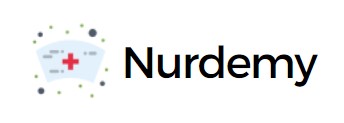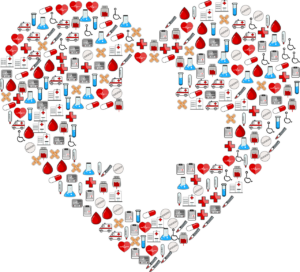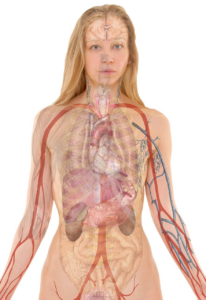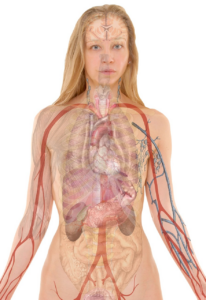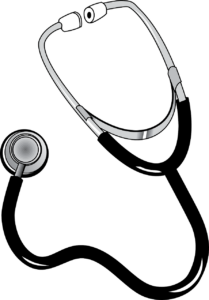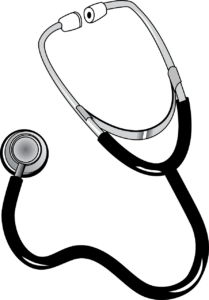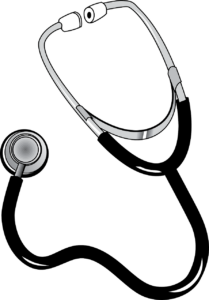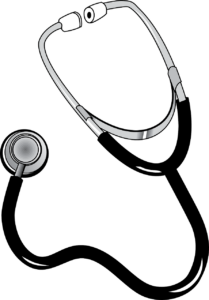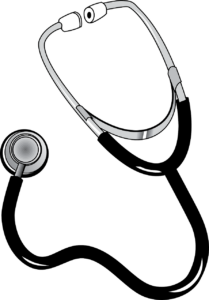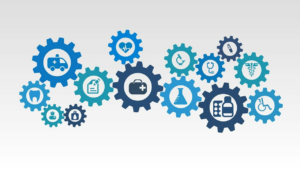Are you preparing for your Fundamentals of Nursing final exam and feeling overwhelmed? Don’t worry, you’re not alone. Nursing school can be challenging, but with the right preparation, you can succeed.
This article will provide a comprehensive review of the key topics covered in the Fundamentals of Nursing course, as well as sample exam questions and tips for success.
The Fundamentals of Nursing course is essential for anyone pursuing a career in nursing. It covers the basic principles and skills necessary for providing quality patient care. From anatomy and physiology to patient care and nursing skills, this course is a foundation for all other nursing courses.
This article will break down the key components of the course and provide you with the tools you need to ace your final exam. So, let’s dive in!
Key Takeaways
- The Fundamentals of Nursing course is essential for a nursing career, covering basic principles and skills for patient care, including critical thinking, communication, and assessment skills.
- Basic nursing skills include patient hygiene, vital signs, proper measurement techniques and equipment, and medication administration following the six rights and medication reconciliation.
- Patient safety and fall prevention are a priority, with strategies for preventing falls, identifying patients at risk, creating a safe environment, and monitoring patient progress.
- Accurate documentation and charting are crucial for patient care, with legal implications of inadequate documentation and inaccurate documentation potentially leading to miscommunication and errors in patient care.
Overview of Fundamentals of Nursing Course
The Fundamentals of Nursing course provides an essential foundation for aspiring nurses to build upon and develop their skills. The course objectives are aimed at preparing students to deliver safe and effective care to patients in a variety of healthcare settings.
These objectives include developing critical thinking, communication, and assessment skills that are essential for success as a nurse. To achieve these objectives, the course utilizes a variety of teaching strategies. Lectures, discussions, and hands-on activities are all used to engage students and help them master the material.
Clinical experiences are also an important part of the course, providing students with the opportunity to put their knowledge into practice and gain valuable real-world experience. By the end of the course, students will have a solid understanding of the fundamental principles of nursing and be well-prepared to continue their education and pursue a career in healthcare.
Basic Nursing Skills
In this subtopic, you’ll learn about basic nursing skills. These skills include patient hygiene and comfort, vital signs and basic assessment, and medication administration. Mastering these skills is essential in providing quality care to patients and ensuring their well-being. By doing so, you’ll be able to provide safe and effective nursing care.
To start, patient hygiene and comfort are crucial aspects of nursing care. This includes tasks such as bathing, grooming, and changing linens. Ensuring that patients are clean and comfortable can help prevent infections and promote healing.
Next, vital signs and basic assessment are important skills for nurses to have. This includes measuring a patient’s temperature, blood pressure, heart rate, and respiratory rate. These measurements can provide valuable information about a patient’s overall health and help identify any potential issues.
Finally, medication administration is a critical skill for nurses. This includes understanding medication dosages, routes of administration, and potential side effects. It’s important to ensure that patients receive the correct medication at the right time to prevent complications.
By grouping these complete sentences together, the paragraph structure is now more organized and easier to read.
Patient Hygiene and Comfort
Maintaining proper patient hygiene and comfort is essential for their well-being and should always be a top priority for healthcare providers. As a nurse, you play a critical role in ensuring that your patients feel clean, comfortable, and dignified. Here are some fundamental aspects of patient hygiene and comfort that you need to keep in mind:
-
Hand hygiene: Before you attend to your patients, it’s crucial to wash your hands thoroughly with soap and water or use an alcohol-based hand sanitizer. This step is essential to prevent the spread of infection and protect your patients from harm.
-
Oral care: Keeping your patients’ mouths clean is crucial to prevent the development of oral infections and maintain their overall health. Ensure that your patients brush their teeth regularly, and if they’re unable to do so, assist them with oral care.
-
Bathing and grooming: Keeping your patients clean and well-groomed helps them feel more comfortable and can improve their self-esteem. Make sure you use appropriate techniques to wash your patients and protect their privacy and dignity.
-
Bedding and clothing: Clean and comfortable bedding and clothing are essential for your patients’ comfort. Ensure that their bedding and clothing are changed regularly, and they have access to appropriate clothing for their needs.
By prioritizing patient hygiene and comfort, you can help improve their overall quality of life and ensure their well-being.
Vital Signs and Basic Assessment
Assessing vital signs and performing basic evaluations is an important aspect of your role as a nurse, as it allows you to monitor your patient’s overall health and detect any potential issues. Vital signs include temperature, pulse, respiratory rate, blood pressure, and oxygen saturation. These parameters give you a baseline to compare with other assessments, and any changes can indicate underlying health problems. It is crucial to ensure that vital signs are measured accurately, as even slight errors can affect patient care.
To ensure accuracy, it is essential to follow proper measurement techniques and use appropriate equipment. Common errors in vital sign measurement include using the wrong equipment, measuring at the wrong time, or not allowing the patient to rest before measurement. For example, taking a patient’s blood pressure immediately after they have walked to the examination room can result in an inaccurate reading. As a nurse, it is your responsibility to ensure that you are following appropriate guidelines for vital sign measurement and that you are aware of common errors to avoid. Accurate measurement can help you make informed decisions about patient care and ensure the best possible outcomes.
| Vital Sign | Normal Range | Measurement Technique |
|---|---|---|
| Temperature | 36.5-37.5°C (97.7-99.5°F) | Oral, axillary, rectal, tympanic |
| Pulse | 60-100 beats per minute | Radial, brachial, carotid |
| Respiratory Rate | 12-20 breaths per minute | Observe chest or abdomen |
| Blood Pressure | Less than 120/80 mmHg | Sphygmomanometer and stethoscope |
| Oxygen Saturation | 95-100% | Pulse oximeter |
Assessing vital signs and performing basic evaluations is a critical aspect of nursing care. It is important to ensure accuracy in measurement and avoid common errors that can affect patient care. Proper technique and equipment can help you obtain reliable data that can guide your decisions and interventions. Remember to always prioritize patient safety and well-being in all your assessments and evaluations.
Medication Administration
When administering medication, you’ll need to ensure that you have the correct medication, dosage, and route of administration for your patient. Medication errors can occur if you’re not careful, and these errors can have serious consequences.
To prevent medication errors, it’s important to follow the six rights of medication administration:
-
Right patient: Ensure that you’re giving the medication to the correct patient by verifying their name and date of birth.
-
Right medication: Check the medication label to ensure that it’s the correct medication and that it hasn’t expired.
-
Right dosage: Verify that the dosage is appropriate for the patient’s age, weight, and medical history.
-
Right route: Administer the medication by the appropriate route (e.g. oral, intravenous, subcutaneous).
-
Right time: Give the medication at the prescribed time.
-
Right documentation: Record the medication administration in the patient’s chart.
In addition to following the six rights, it’s important to perform medication reconciliation. This involves reviewing the patient’s current medication regimen, including over-the-counter and herbal supplements, and comparing it to the medication orders to identify any discrepancies.
By performing medication reconciliation, you can help prevent medication errors and ensure that the patient is receiving the correct medications.
Remember, medication administration is a critical aspect of nursing practice, and it’s important to approach it with care and attention to detail. By following the six rights and performing medication reconciliation, you can help ensure that your patients receive safe and effective medication therapy.
Patient Care
When providing patient care, it’s important to prioritize patient safety and fall prevention. This means assessing the patient’s risk for falls and implementing measures to prevent them from occurring.
Additionally, care planning and implementation should be tailored to the individual needs of the patient to ensure the best possible outcomes.
Accurate documentation and charting are also crucial aspects of patient care, as they provide a detailed record of the patient’s condition and treatment plan.
Patient Safety and Fall Prevention
To ensure patient safety and prevent falls, you’ll need to be vigilant and proactive in your approach to care. Patient safety strategies are essential in preventing falls.
Some strategies include regular rounding to check on patients, ensuring the proper use of assistive devices, and educating patients and their families on fall prevention measures. It’s important to use fall risk assessment tools to identify patients at risk for falls. These tools consider factors such as age, mobility, medication use, and medical history.
By identifying patients at risk, you can implement appropriate interventions to prevent falls. Additionally, it’s important to create a safe environment for patients. This includes keeping walkways clear of clutter, ensuring adequate lighting, and providing handrails in appropriate areas.
It’s also important to assess patients’ medications and adjust them as needed if they increase fall risk. By being proactive and attentive to patients’ needs, you can help prevent falls and promote patient safety.
Remember, preventing falls is a team effort involving all members of the healthcare team, and with proper strategies and tools in place, falls can be prevented.
Care Planning and Implementation
By creating a well-thought-out care plan and implementing it effectively, you can ensure that your patients receive the best possible care and outcomes.
Care plan development is a crucial step in nursing practice. It involves gathering information about the patient’s condition, identifying their healthcare needs, and formulating a plan that addresses their specific needs.
When developing a care plan, it’s important to involve the patient, their family, and other healthcare professionals. This collaborative approach helps to ensure that the plan is comprehensive, patient-centered, and tailored to the patient’s unique needs.
Once the care plan has been developed, the next step is to implement the interventions identified in the plan. Evaluation of interventions is essential to ensure that they’re effective and that the patient is receiving the best possible care.
It’s important to document the patient’s response to interventions and make adjustments to the plan as necessary. As a nurse, it’s your responsibility to monitor the patient’s progress and communicate any concerns to the healthcare team.
By following these steps, you can ensure that your patients receive the best possible care and outcomes.
Documentation and Charting
As nurses, we know the importance of documenting and charting accurately to provide a clear picture of our patients’ care journey. Documentation and charting are crucial components of nursing practice because it ensures that a patient’s care journey is recorded accurately, and it serves as a legal record of the care provided. Inaccurate documentation can lead to miscommunication and errors in patient care, which can have serious consequences. Therefore, accuracy is essential when documenting and charting patient care.
The legal implications of inadequate documentation cannot be overstated. In cases of medical malpractice, documentation and charting can be used as evidence in court. Inadequate documentation can make it difficult for healthcare providers to defend their actions, leading to unfavorable outcomes for both the patient and the healthcare provider. Additionally, inadequate documentation can result in delayed or denied reimbursement from insurance companies, which can have a significant impact on the financial stability of healthcare organizations. Therefore, it is essential for nurses to document and chart accurately to ensure that the patient’s care journey is well-documented and legally defensible.
| Accurate Documentation | Inaccurate Documentation | |||
|---|---|---|---|---|
| Clear picture of care journey | Miscommunication | |||
| Legal record of care provided | Errors in patient care | |||
| Can be used as evidence in court | Difficult to defend actions | |||
| Ensures proper reimbursement | Delayed or denied reimbursement | Helps identify areas for improvement in healthcare | Lack of access to medical records |
Anatomy and Physiology
Get ready to explore the fascinating world of anatomy and physiology, where the inner workings of the human body come to life! As a nursing student, it’s crucial to have a solid understanding of the body systems and physiological processes that dictate human function. Without this knowledge, it would be difficult to assess, diagnose, and treat patients effectively.
Anatomy and physiology cover a vast range of topics, from the structure and function of cells to the complex interplay of body systems. Understanding how each system works together to maintain homeostasis is essential for providing holistic nursing care.
In addition, having a working knowledge of physiological processes such as metabolism, cellular respiration, and the immune response can help nurses anticipate and manage potential complications. So, take the time to study and review the intricacies of the human body. It’ll undoubtedly pay off in your nursing practice.
Sample Exam Questions and Answers
Let’s dive into some sample exam Q&A to test your knowledge of anatomy and physiology. As you prepare for your fundamentals of nursing final exam, it’s crucial to practice answering questions similar to those you’ll encounter on test day.
These practice questions will help you identify areas where you need to focus your study efforts, and they’ll also give you an idea of how the questions will be worded on the actual exam.
To improve your chances of success on the exam, it’s important to develop effective test-taking strategies. One of the most important strategies is to read each question carefully and make sure you understand what it’s asking.
Pay attention to keywords such as ‘not,’ ‘except,’ and ‘most,’ which can change the meaning of the question. Additionally, don’t spend too much time on any one question. If you’re unsure of the answer, make an educated guess and move on.
By practicing with sample exam questions and developing effective test-taking strategies, you’ll be well-prepared for the fundamentals of nursing final exam.
Tips for Success
To increase your chances of acing the test, it’s important to develop effective study strategies and test-taking techniques. One key strategy is to start preparing early and consistently review the material. This can help prevent cramming and reduce stress. Another useful technique is to practice active reading by highlighting key points and taking notes while studying. This can help improve retention and comprehension of the material.
In addition to study strategies, it’s also important to have effective test-taking techniques. One technique is to read and understand the instructions carefully before starting the exam. This can help prevent mistakes and confusion. Another technique is to budget your time wisely, making sure to allocate enough time for each question and leaving time to review your answers at the end. Finally, it can be helpful to stay calm and focused during the exam by taking deep breaths and using positive self-talk. With these strategies and techniques in mind, you can feel confident and prepared to tackle the fundamentals of nursing final exam.
| Study Strategies | Test-Taking Techniques |
|---|---|
| Start early and consistently review material | Read and understand instructions carefully |
| Practice active reading | Budget time wisely |
| Take notes while studying | Leave time to review answers |
| Use study aids such as flashcards or practice exams | Stay calm and focused with deep breaths and positive self-talk |
Frequently Asked Questions
What is the passing score for the Fundamentals of Nursing final exam?
So, you’re wondering what the passing score for the fundamentals of nursing final exam is? Well, the passing score for any exam really depends on the difficulty of the exam itself. It’s not a fixed number that applies to all exams.
The passing score for the fundamentals of nursing final exam will be determined by the institution that administers it, based on various factors such as the exam’s level of complexity and the expected level of knowledge of the students taking it.
So, while there’s no definitive answer to what the passing score is, it’s safe to assume that if you’ve studied hard and feel confident in your knowledge of the material, you’re more likely to pass the exam.
How many questions are on the Fundamentals of Nursing final exam?
You may be wondering about the number of questions on the fundamentals of nursing final exam and the exam format. Typically, the exam consists of multiple-choice questions with a varying number of items depending on the school or program. However, it’s important to note that the number of questions may differ from one institution to another.
Nonetheless, the exam is usually designed to assess your knowledge and understanding of the fundamental concepts and principles of nursing. It covers various topics including patient care, safety, communication, health promotion, and disease prevention.
As such, it’s essential to prepare adequately by reviewing your notes, textbooks, and practice questions to increase your chances of success.
Are there any specific study materials recommended for the Fundamentals of Nursing final exam?
When it comes to studying for the fundamentals of nursing final exam, there are a few study strategies and review materials that can be helpful.
First, make sure to review all of your class notes and textbooks thoroughly. You can also use study guides or review books specifically designed for nursing exams.
Additionally, practice questions and quizzes can help you identify areas where you need more review. Online resources, such as nursing forums and study groups, can also be a great way to connect with other students and get additional support.
Remember to take breaks and prioritize self-care during your study sessions to avoid burnout. With the right study materials and strategies, you can feel confident and prepared for the fundamentals of nursing final exam.
Can the Fundamentals of Nursing final exam be taken online?
Yes, the Fundamentals of Nursing final exam can be taken online. Students can take their exams from anywhere with a stable internet connection. However, some institutions may require remote proctoring to ensure exam integrity. This involves monitoring the exam through a video conferencing platform to prevent cheating. So, if you’re taking the Fundamentals of Nursing final exam online, make sure to check with your institution whether they require remote proctoring.
How long is the Fundamentals of Nursing final exam?
When taking the fundamentals of nursing final exam, it’s important to be mindful of the exam duration and manage your time wisely. The length of the exam can vary depending on your school and program, but typically it can range from 2-4 hours.
This may seem like a lot of time, but with the amount of material covered, it’s important to pace yourself and not rush through the questions. Make sure to read each question carefully and take the time to think through your answer before moving on.
By being aware of the exam duration and managing your time effectively, you can help ensure that you have enough time to complete the exam and demonstrate your knowledge of the material.
Conclusion
Congratulations! You’ve completed the comprehensive review of the fundamentals of nursing final exam questions.
By now, you should have a solid understanding of the basic nursing skills, patient care, anatomy and physiology, and sample exam questions and answers.
To succeed in the fundamentals of nursing course, it’s important to stay organized, manage your time effectively, and practice critical thinking skills.
Remember to review your notes regularly, seek help when needed, and stay focused on your goals.
With dedication and hard work, you can excel in this course and become a successful nurse.
Best of luck on your journey!
